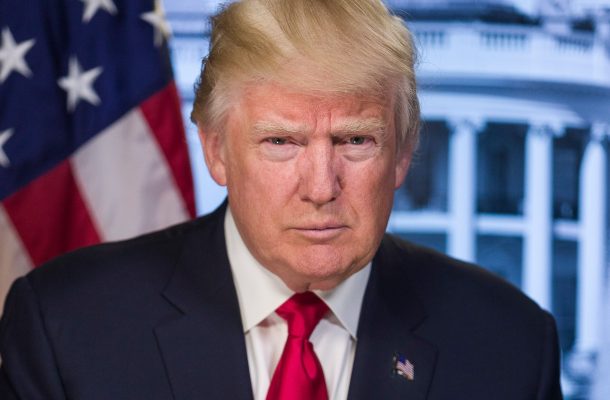Arvanitakis on American Politics: The third debate and 12 days to the election

The third and final debate was held on Thursday evening USA local time and took place 12 days before the election. The aim for Trump was to reassert his authority without looking petulant as he did in the first debate, and for Biden was not to make any serious gaffs.
The moment the debate finished, both Republicans and Democrats claimed victory. What worked for Republicans including Trump’s claim that he was ‘not a politician’ while looking into the camera. This would be something that would have connected with many viewers who have seen the Democrat’s behaviour over the last four years including impeachment as being about their inability to accept the election.
Biden’s suggestion that America should “transition” away from the oil industry was a point that Trump pounced on. It is true that this is something that will occur if the Democrats implement the climate policy they favour, but it is doubtful that Biden meant to say this so forcefully and Trump seized on it by stating that he hopes, ‘Texans heard it’.
For Democrats, Biden was clear and sincere. He showed empathy towards the personal impacts that Americans have been experiencing due to COVID19 – something that Trump has not been able to do. Biden’s attack on Trump’s personal finances was also effective.
Biden also reiterated that he was not ‘Blue or Red’ but would represent ‘all Americans’. Nate Silver from FiveThirtyEight noted that
“One of Biden’s strengths is in not being afraid to use hokey lines — that we’re all one America, etc. — that journalists would probably sneer at but that are potentially effective with regular voters.”
Overall the debate was a much more orderly affair than the first time the two candidates met in September. It was not as polite as the Vice President debate between Kamala Harris and Mike Pence, but it did feature 15-minute segments touching on COVID-19, foreign policy, the economy, race and climate change.
The problem for the voters, however, is that answers are hard to pin down and there is no accountability. While we may celebrate a return to ‘normalcy’ in the way the debate was conducted, that normality includes non-answers, vague responses and a set of lines whose facts are questionable at best.
All this was happening as Americans were casting their ballots through pre-election polls and mail voting. It is estimated that 40 million Americans have already voted – representing almost 30 percent of the more than 136 million total ballots cast in the 2016 presidential election.
The uncertainty…
This number of pre-votes is unprecedented and has only been possible because many states have changed their laws to make voting easier. The results, however, have been marked by growing uncertainty.
According to the Stanford-MIT Healthy Elections Project, both Democratic and Republican lawyers have filed hundreds of election-related lawsuits in state and federal courts. The 380 legal challenges currently taking place means that this election will be the most litigated in history.
For example, this week Chief Justice John Roberts joined his three colleagues to uphold Pennsylvania’s Supreme Court decision extending the deadline for accepting absentee ballots. While Democrats were elated with this outcome, it was the third time Republicans had unsuccessfully attempted to limit mail-in voting in Pennsylvania.
We should remember that President Donald Trump won Pennsylvania by just over 44,000 votes four years ago – so even the slightest of changes could be significant. This ruling, however, only remains in place because the U.S. Supreme Court is deadlocked. With the Senate poised to confirm Trump nominee Judge Amy Coney Barrett as the ninth justice, Democrats are well aware that this may be a short-term win.
This returns us to a point that has been raised a number of times before: that the result is unlikely to become known on election night. This means that the longer it takes, the uncertainty will increase.
What aggravates this situation is that Trump and Biden supporters have deep disagreements over whether the election will have a clear winner. Pew Research reported that about three-quarters of registered voters who support Biden (76 percent) are confident that the country will know the winner of the presidential election after all the votes are counted, including 30 percent who are very confident.
In contrast, Trump supporters are far less confident than Biden supporters that mail ballots will be counted as voters intend. As such, a smaller majority of Trump supporters (55 percent) are confident that Americans will have a clear sense of who won, with just 13 percent saying they are very confident the winner will be clearly known after all the votes are counted.
What will happen next…
As I have discussed before, both an increasing number of Democrats and Republicans are likely to accept violence if the election does not go to their candidate. If the polls are right, and with the President repeatedly refusing to state that he will accept the election result, security forces are on increasingly high alert.
The polls have been wrong before, however, and with research highlighting that many Americans feel that they are better off under Trump, we should be careful in reading only what confirms our own biases.
On a personal note, I still believe the election could go either way.
Trump is reminding Americans that under the Obama/Biden Administration, many of them where left behind. While many political commentators point to the chaos of the current Administration and often sneer at those who vote for Trump, for many Americans he has attempted to confront issues they feel strongly about: loss of manufacturing jobs, migration reform, responding to a sense that political correctness has gone too far and the importance of energy security.
You may not agree or even like him, but Trump has challenged the status quo. For many, this is exactly what was required.
Professor James Arvanitakis is the Executive Director of the Australian American Fulbright Commission – one of the world’s most prestigious international education and cultural exchange programs.














